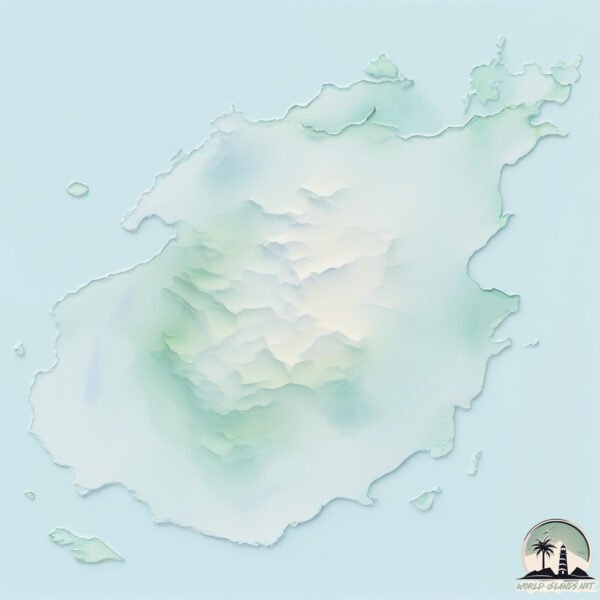Paros

Welcome to Paros, a Temperate island in the Aegean Sea, part of the majestic Atlantic Ocean. This guide offers a comprehensive overview of what makes Paros unique – from its geography and climate to its population, infrastructure, and beyond. Dive into the details:
- Geography and Size: Explore the island’s size and location.
- Climate and Weather: Weather patterns and temperature.
- Topography and Nature: Uncover the natural wonders of the island.
- Infrastructure and Travelling: Insights on reaching, staying, and making the most of your visit.
- News and Headlines: Latest News.
Geography and size of Paros
Size: 197.8 km²
Coastline: 105 km
Ocean: Atlantic Ocean
Sea: Aegean Sea
Continent: Europe
Paros is a Large Island spanning 198 km² with a coastline of 105 km.
Archipel: Cyclades – A group of islands in the Aegean Sea, part of Greece, known for their iconic white-washed architecture, beautiful beaches, and rich history.
Tectonic Plate: Eurasia – One of the world’s largest tectonic plates, the Eurasian Plate covers a significant portion of Europe and Asia. It’s characterized by diverse geological features, including the Ural Mountains, the European Plain, and the Himalayas formed from its collision with the Indian Plate.
The geographic heart of the island is pinpointed at these coordinates:
Latitude: 37.059498 / Longitude: 25.19237106
Climate and weather of Paros
Climate Zone: Temperate
Climate Details: Hot-Summer Mediterranean Climate
Temperature: Hot Summer
Climate Characteristics: Characterized by hot, dry summers and mild, wet winters, typical of coastal areas with abundant sunshine.
Topography and nature of Paros
Timezone: UTC+02:00
Timezone places: Europe/Mariehamn
Max. Elevation: 649 m
Mean Elevation: 140 m
Vegetation: Agricultural Mosaic
Tree Coverage: 14%
The mean elevation is 140 m. The highest elevation on the island reaches approximately 649 meters above sea level. The island is characterized by Plateau: Elevated flatlands rising sharply above the surrounding area, with a maximum elevation over 500 meters but a mean elevation less than 300 meters, forming unique highland areas on islands.
Dominating Vegetation: Agricultural Mosaic
A mix of cropland and natural vegetation, often seen in rural landscapes where agricultural fields are interspersed with patches of natural habitats. Paros has a tree cover of 14 %.
Vegetation: 12 vegetation zones – Exceptionally Diverse Island
Islands with more than ten vegetation zones are among the most ecologically rich and varied in the world. These islands are akin to miniature continents, boasting an incredible array of ecosystems. The sheer range of habitats, from high peaks to deep valleys, rainforests to deserts, creates a mosaic of life that is unparalleled. They are crucial for conservation and ecological studies.
Infrastructure and Travelling to Paros
Does the island have a public airport? yes.
Paros has a public and scheduled airport. The following airports are located on this island: Paros National Airport.
Does the island have a major port? no.
There are no major ports on Paros. The closest major port is NISOS NAXOS, approximately 9 km away.
The mean population of Paros is 68 per km². Paros is Gently Populated. The island belongs to Greece.
The name of the island resonates across different cultures and languages. Here is how it is known around the world: Arabic: باروس; German: Paros; Spanish: Paros; French: Paros; Portuguese: Paros; Russian: Парос; Chinese: 帕罗斯岛
Continuing your journey, Nisí Antíparos is the next notable island, situated merely km away.
Greece is classified as Developed region: nonG7: Developed economies outside of the Group of Seven, characterized by high income and advanced economic structures. The level of income is High income: OECD.
News – Latest Updates and Headlines from Paros
Stay informed with the most recent news and important headlines from Paros. Here’s a roundup of the latest developments.
- Best Airbnbs in Paros for a perfect homestay on the best all-rounder Greek island - Condé Nast Travelleron 21 February 2025
Best Airbnbs in Paros for a perfect homestay on the best all-rounder Greek island Condé Nast Traveller
- The Top 4 Locations in Greece for a Luxury Vacation - Luxury Travel Magazineon 19 February 2025
The Top 4 Locations in Greece for a Luxury Vacation Luxury Travel Magazine
- Best Greek Island hotels 2025, reviewed - The Independenton 10 February 2025
Best Greek Island hotels 2025, reviewed The Independent
- Conde Nast Traveller: The Top Greek Destinations Captivating Instagram - Greek City Times - GreekCityTimes.comon 1 February 2025
Conde Nast Traveller: The Top Greek Destinations Captivating Instagram - Greek City Times GreekCityTimes.com
- Moonhouse Paros: Where Minimalism and Soulfulness Collide - Luxury Travel Magazineon 31 January 2025
Moonhouse Paros: Where Minimalism and Soulfulness Collide Luxury Travel Magazine
- Conde Nast Traveller | Milos and Paros are the top Greek islands - Tornos News International Editionon 29 January 2025
Conde Nast Traveller | Milos and Paros are the top Greek islands Tornos News International Edition
- Moonhouse Paros Greece: Where Minimalism and Soulfulness Collide - Drift Travel Magazineon 29 January 2025
Moonhouse Paros Greece: Where Minimalism and Soulfulness Collide Drift Travel Magazine
- Paros 2025: The Hottest Hotels to Know - travel.gron 28 January 2025
Paros 2025: The Hottest Hotels to Know travel.gr
- Your guide to the best Greek islands - GLAMOUR UKon 23 January 2025
Your guide to the best Greek islands GLAMOUR UK
- Learning the secrets of longevity on the Greek island of Paros - The West Australianon 10 January 2025
Learning the secrets of longevity on the Greek island of Paros The West Australian
Please note: The data used here has been primarily extracted from satellite readings. Deviations from exact values may occur, particularly regarding the height of elevations and population density. Land area and coastline measurements refer to average values at mean high tide.
